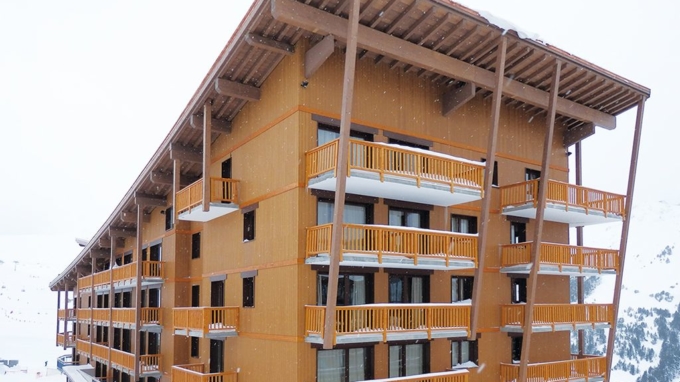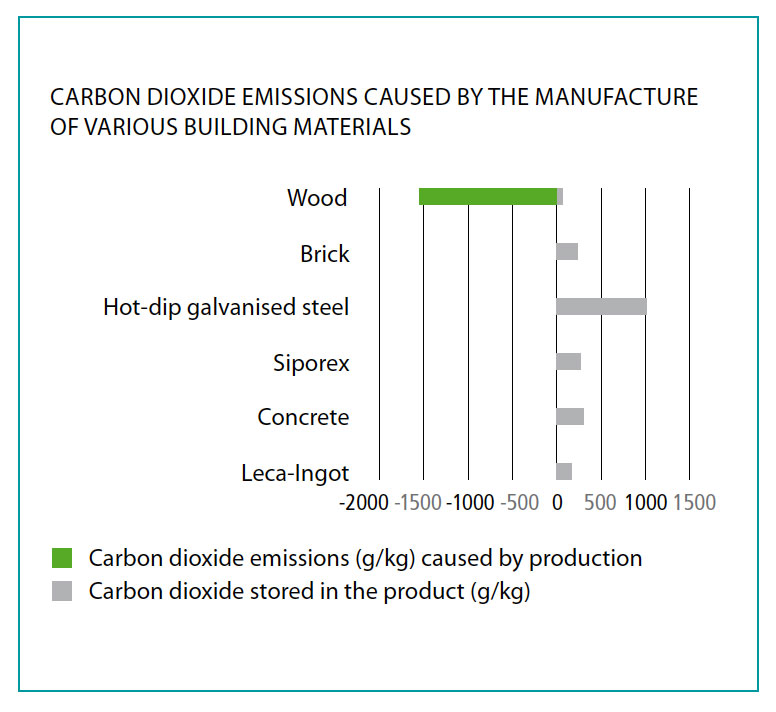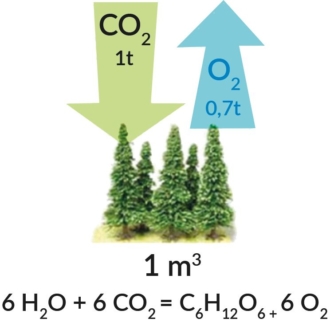Good features of timber
Finland is among the best timber growth areas in the world. It belongs to a cold climate zone, where cold frosty winter and warm summer take turns. The summer season lasts only about 100 days, during which the tree grows. Short growth seasons equals slow growth, which means that it takes 60 to 120 years for a tree to grow to maturity.
Thanks to slow growth one gets the best raw material with long, direct grain. Wood has less knots and they are small. Growth is symmetric, and the logs are straight and round. Growth rings are thin, and they are dense. Pro portion of sapwood is small, and heartwood is large.
As a result of this all the wood material from Finland is strong, elastic, dense and straight grained, where tension and splits are uncommon.
There is very little resin and the evenly grown and patterned wood is the first choice for many end uses.
Wood is easy to work with
Because of their properties Finnish Redwood and Whitewood are easy to work with compared with many other alternatives. The weight to strength ratio is excellent for structural purposes. The properties of Redwood and Whitewood differ somewhat, but for many end uses they are interchangeable.
Redwood bottom logs’ outer part produces qualities with only few or even no knots at all. As the Pine (Redwood) tree grows the branches from the bottom section drop off, while Spruce (Whitewood) retains its branches down to the bottom – resulting in a more even quality andmore sound knots all along the stem.
Redwood is ideal for impregnation, because the sapwood is permeable, and the heart wood does not rot. In Whitewood the sapwood does not absorb moisture easily, therefore the impregnation.

Wood is always available
Another important argument for wood products is the general availability.
In Finland the annual logging volume is much smaller than the annual cut is, which ensures log reserves also for the future.
Each sawmill has their own, natural log procurement areas closest possible to the mill, thus ensuring that the raw material remains the same year in year out.
From the customers’ viewpoint it is essential that they receive right type and grade of materials at the right time. This is vital for the industrial end users, who need right type of raw materials in required grade to their automated production lines.
On some markets customers have learned that there are no guarantees of further deliveries, delivery times and even whether the same species is available at all.
Therefore, continuity and even, predictable quality is a clear competitive advantage to Finnish sawmilling industry.
Environmental awareness steers consumption
It is necessary to point out to consumers, authorities and media that the raw materials used for the production of wood products come from legal and sustainable sources.
Forest certification system
Forest certification systems cover the tending of forests, the felling of forests, the chain of custody from the forest to the mill and then all the way to the customer.
Thereby the origin of certified raw material can be traced. Although there are more and more forests being brought to certification systems, only 10% of world forests are certified. In Finland the percentage of certified forests is 95%.
There are around 50 different forest certification systems globally. Two most common are:
- FSC (Forest Stewardship Council)
- PEFC (Programme for the Endorsement of Forest Certification schemes).
FSC started as a protection system for tropical rain forests, whereas PEFC was designed originally to ensure sustainability in European commercially used forest areas.
Certification is required especially in European markets, but markets outside Europe are also starting to demand this for their wood products.
Mostly the demand for certification comes from the distributors and end users of wood products. Distribution chains may be tied to a specific certification system, which then is being reflected back to the producers.
In Europe countries like the United Kingdom and Holland, as well as Eastern European markets usually go for FSC, whereas Germany and France have more demand for PEFC goods.

Main focus of PEFC certification is in the ensuring of diversity in the forests, the health of forests, sustainable growth and the recreational use of forests. With the Chain of Custody one can follow the material flow and assess the certified raw materials origin and volume. With this system one can prove which proportion of the incoming raw materials is from certified forests.
In Finland the PEFC system is managed by Suomen Metsäsertifiointi ry (Finnish Forest Certification), with a Board consisting of representatives for various forestry linked bodies.
FSC is formed by its members, which can be either organisations or people. From the administration point of view FSC has been divided into three chambers, which are Environmental Chamber, Social Chamber and Economic Chamber. These chambers have been divided into southern and northern sections. Members of FSC belong to one of the chambers according to their backgrounds. The main forum for international FSC is the general assembly, held every three years and in which each chamber has one third of the votes.
With FSC the environmental protection aspect is on the forefront. Main environmental organizations are backing FSC certification. FSC follows up, just like PEFC does, the Chain of Custody, the origin and volumes of raw materials.
In Sweden the FSC system is in wide use, while Finland is mostly PEFC. This can be explained by the differences in forest ownership structure in these countries: In Sweden a large part of forests is owned by big forest owners like forest companies, municipalities and the state. In Finland most of the forests – about 2/3 – are owned by private, small forest owners. For them the group certification under PEFC has offered a cheaper and easier way to certify their relatively small forest land, compared with FSC where the certification is based on dealing with each owner independently.
Wood has a good carbon footprint
Carbon footprint is a term denoting the product’s emissions during its life cycle.
This is a good tool when assessing the emissions and possibilities of reducing them during a product’s life cycle. The bigger the footprint is the bigger the emissions.
The wood product footprint is divided into two parts:
- The biogenic footprint is the volume of carbon dioxide stored in the product.
- The fossil footprint equates to the emissions during the entire life cycle of the product. Trees absorb twice their own weight during their life cycle. During transportation and processing of timber there are also some emissions.
Wood absorbs carbon when it grows and releases it when it burns. Therefore woodbased products act as carbon sinks during their life cycles.
Wood is the only building material which doesn’t cause carbon emissions. This is why wood-based building solutions are favored in countries where the emissions are to be reduced.

Carbon dioxide emissions caused by the manufacture of various building materials. ©Puuinfo Oy, Source : Rakennustiedon RT -ympäristöselosteet .
Wood-based building products act as longterm carbon sinks.
An average Finnish timber framed house absorbs to its timber structure about 30 tons of carbon from the air. This corresponds with one person’s average carbon emissions from a car in over 10 years. Carbon can remain in wood structures over a hundred years.
The production of wood products results in relatively little carbon emissions. The carbon sink of wood products is much bigger than emissions from their production.
If the wood products are converted at the end of their life cycle into energy the emissions into the atmosphere are not more than what the wood hadabsorbed during its lifetime.
Wood products can also reduce the emissions, when they are being used to substitute products that cause carbon dioxide when they are manufactured.
Quite often the impact of this is greater than the wood’s carbon sink effect. This is because wood is a lighter, yet strong material and it can be used to substitute heavier products, which also result in heavier emissions during the production.
One kilogram of wood needs to grow about 1.55kg carbon dioxide from the air, which is then stored in wood. About half of the wood material is carbon. The rule of thumb is that 1 cubic meter of wood stores 1 tonne of carbon dioxide. © Puuinfo Oy
When building one square meter of wall out of wood, there will be a 52 kg carbon sink. If this wall is replacing a concrete wall, then one avoids about 110 kg carbon dioxide emission caused by the concrete production.
Recycling of wood
Timber is not naturally poisonous or dangerous in any way. At the end of its life cycle wood products can be recycled or converted into energy. Energy generated from wood is renewable energy and it replaces fossil fuels.
However, impregnated wood products must be recycled separately in an appropriate environment.


